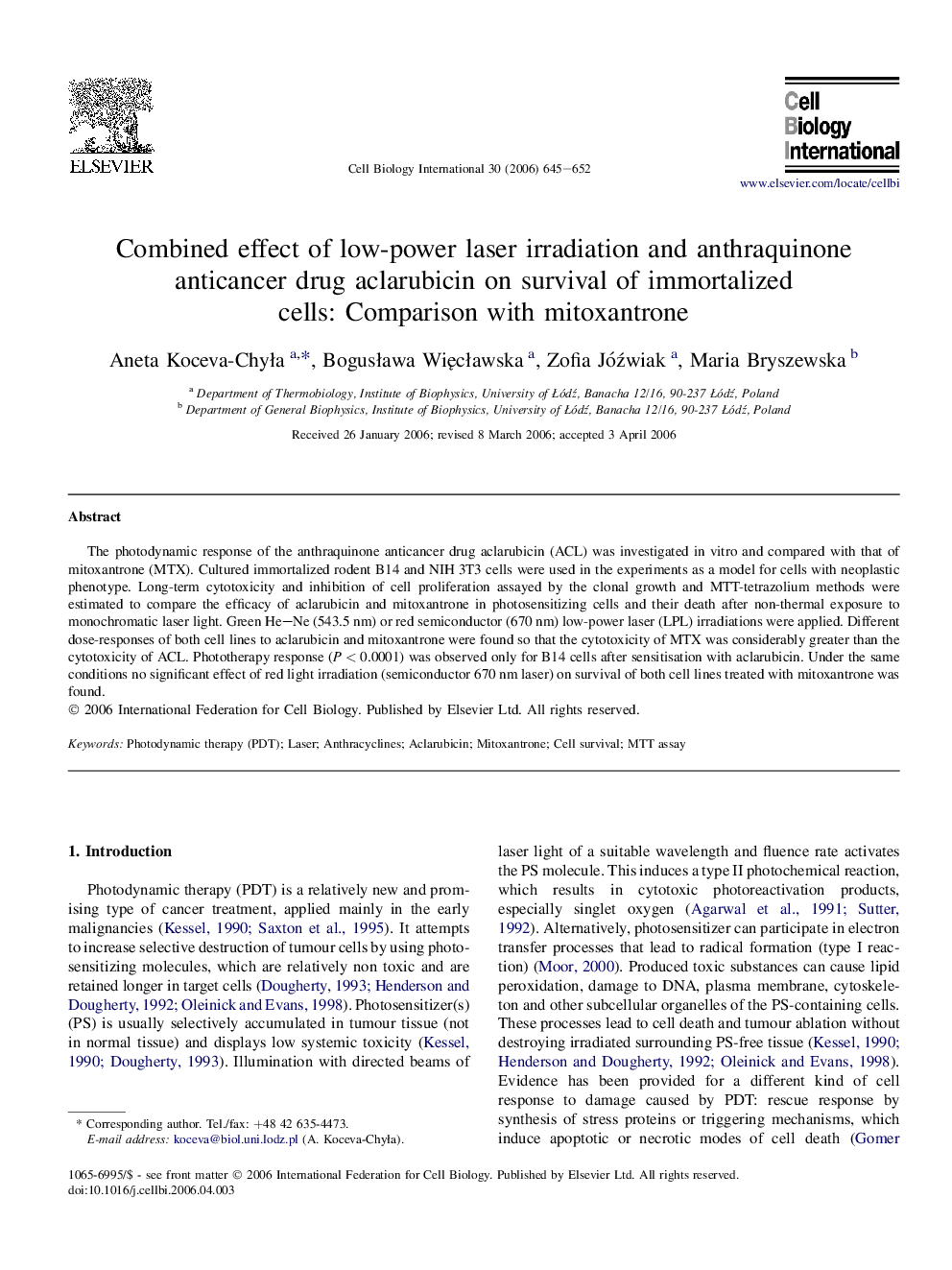| Article ID | Journal | Published Year | Pages | File Type |
|---|---|---|---|---|
| 2067889 | Cell Biology International | 2006 | 8 Pages |
Abstract
The photodynamic response of the anthraquinone anticancer drug aclarubicin (ACL) was investigated in vitro and compared with that of mitoxantrone (MTX). Cultured immortalized rodent B14 and NIH 3T3 cells were used in the experiments as a model for cells with neoplastic phenotype. Long-term cytotoxicity and inhibition of cell proliferation assayed by the clonal growth and MTT-tetrazolium methods were estimated to compare the efficacy of aclarubicin and mitoxantrone in photosensitizing cells and their death after non-thermal exposure to monochromatic laser light. Green He-Ne (543.5Â nm) or red semiconductor (670Â nm) low-power laser (LPL) irradiations were applied. Different dose-responses of both cell lines to aclarubicin and mitoxantrone were found so that the cytotoxicity of MTX was considerably greater than the cytotoxicity of ACL. Phototherapy response (PÂ <Â 0.0001) was observed only for B14 cells after sensitisation with aclarubicin. Under the same conditions no significant effect of red light irradiation (semiconductor 670Â nm laser) on survival of both cell lines treated with mitoxantrone was found.
Related Topics
Life Sciences
Biochemistry, Genetics and Molecular Biology
Biophysics
Authors
Aneta Koceva-ChyÅa, BogusÅawa WiÄcÅawska, Zofia Jóźwiak, Maria Bryszewska,
